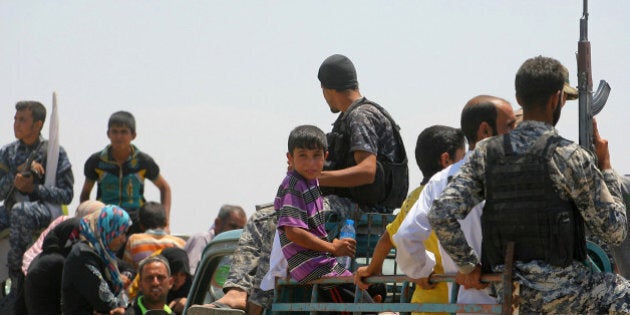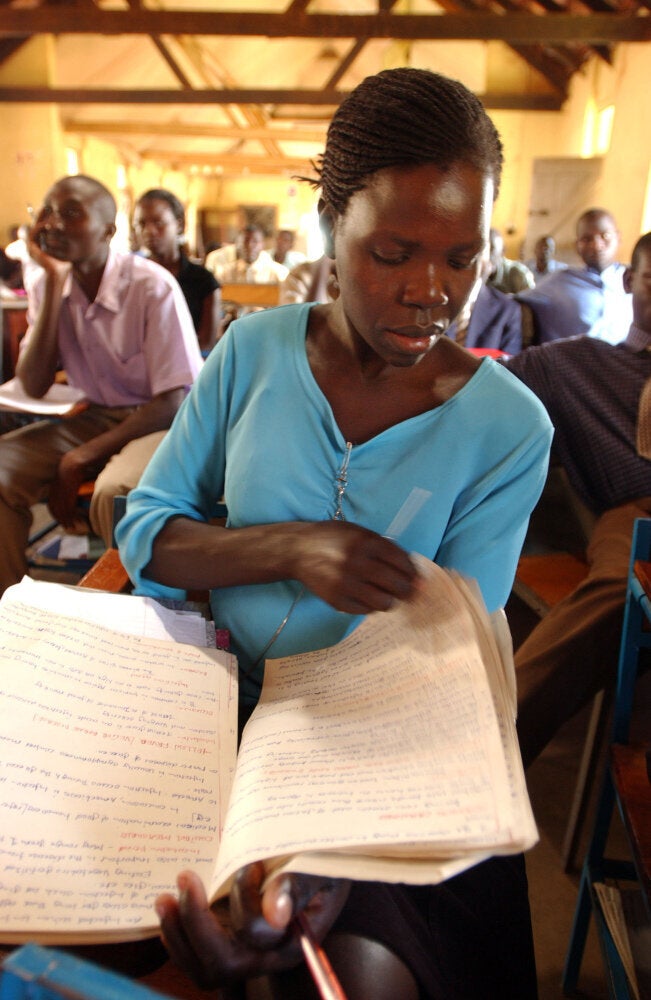
On a regular gut-wrenching basis, we have come face to face with the destruction and death that has befallen our youngest. We see images of young bodies awash on foreign shores, fleeing violence and death from distant lands. We see images of children emaciated by famine, not a product of weather but warring factions. We see videos of children taking up arms, training to fight an enemy who is not yet known for a cause that is not of their own making.
In our data driven world, numbers are key in terms of conveying the size of a problem or the intensity that we should pay attention to it. However, many of the world's most intractable problems continue to defy any systemic approaches to be easily counted. This is particularly accurate when assessing the effects of war on children.
The truth is, that the international community does not have an accurate idea of how many children continue to fight down to a precise number, not even a rough estimate.
Given the spread of electronic information and the attention to international justice that outlaws the use of children as soldiers, commanders are not inviting the international community with open arms to come and count the numbers of children who continue to swell their ranks. Contrary to popular belief, many of these commanders are educated and well aware of the international laws and moral lines, which they are crossing. Their use of children is predicated on the perceived strategic and tactical advantages they gain by using children.
The Washington Post, produced a sobering analysis of the long held belief that 300,000 child soldiers continue to fill the ranks of state armies and non-state armed groups. The oft-cited stat, attributed to UNICEF from the early aughts, is a cautionary tale when an estimate, a very loose one at that, moves from concept to accepted reality. The truth is, that the international community does not have an accurate idea of how many children continue to fight down to a precise number, not even a rough estimate.
Practitioners, journalists and thought-leaders in this field are sometimes guilty of perpetuating this stat and others of dubious origin. These stats act as a sort of shorthand that fits nicely in a tweet, looks damning in a report, making a snappy headline while getting individuals and donors to straighten their back, take a deep breath and pay attention.
In lieu of big numbers here is what we know. From the latest United Nations Secretary General Annual Report on Children and Armed Conflict, children continue to be recruited and used by seven state armies and 51 non-state armed groups in 14 different country contexts around the globe. Some 3,799 children were recruited and used as child soldiers, 3,623 cases that were verified.
War is not constant, but ebbs and flows with periods of relative peace punctured with deafening levels of violence and destruction.
The SG's report uses data that is collected country by country through its monitoring and reporting mechanism (MRM) which collects incidents that violate one of the six grave violations against children outlined in UN SC Res 1612. One of these grave violations is the recruitment and use of children as soldiers. The MRM collates reports from NGOs, UN bodies, civil society, directly from children and communities that have been affected.
These violations must be triangulated in each instance to be considered verified and reported in the Annual Report on Children and Armed Conflict. As a result, we know that the report always underestimates the actual number of incidents and often fails to be able to gather the third party verification of incidents. This is because in many of the contexts that the evidence is being gathered are volatile and difficult to collect evidence within due to high insecurity and lack of access to affected populations.
War is not constant, but ebbs and flows with periods of relative peace punctured with deafening levels of violence and destruction. As such, when these numbers are viewed in light of the emerging trends outlined in the report, the situation is clearly deteriorating for many children who continue to be directly affected by conflict and who are at risk of being recruited and used as child soldiers.
It is imperative that instead of focusing on the individual numbers, we focus on the trends. How do we interrupt the recruitment of children? What are the patterns and where do we focus our efforts and resources to make the most impact? If we can impact the demand side of the equation -- the armed forces and groups that continue to use children -- then maybe we can find effective solutions that reduce the demand instead of focusing on the statistics that detail the supply side of the equation -- the children.
Follow HuffPost Canada Blogs on Facebook
ALSO ON HUFFPOST:
